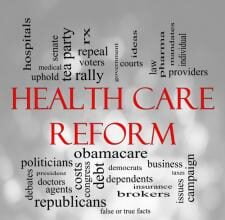- As of July 1, 2006, more than half of all state Medicaid programs were operating one or more pay-for-performance programs. Within the next five years, if all current plans to start new programs are realized, nearly 85 percent of states will be operating Medicaid pay-for-performance programs.
- Medicaid is not a new entrant to the field of pay-for-performance: almost half of all existing programs are more than five years old. A similar percentage of programs began operations within the past two years. More than 70 percent of planned new programs are expected to start within the next two years.
- Seventy percent of existing Medicaid pay-for-performance programs operate in managed care or primary care case management (PCCM) environments, focusing on health care for children, adolescents, and women. While planned programs are still focused on managed care and PCCM providers, they appear to be shifting their emphasis to environments in which quality and cost issues related to chronic disease management can be better targeted. Rewarding the provision of primary care continues to be a component in the vast majority of Medicaid pay-for performance programs.
- Nine Medicaid programs are joining with other payers, employers, consumers, and providers in statewide and regional pay-for-performance and quality improvement efforts.
- Health information technology (HIT) is a focus of numerous Medicaid pay-for-performance programs. Several Medicaid programs are “paying for participation,” rather than “performance,” in an effort to encourage providers to adopt electronic health records, electronic prescribing, and other technologies.
- The vast majority of Medicaid directors reported that their priority in operating pay-for-performance programs is to improve quality of care rather than reduce costs.
- HEDIS and HEDIS-like measures are most popular in Medicaid P4P.
- In 2000, 55.8 percent of all Medicaid beneficiaries were enrolled in managed care; by December, 2004, this percentage had increased to 61.3 percent. Managed care is the primary P4P setting for Medicaid. Primary care case management (PCCM) is the second most prevalent provider type included in P4P programs.
- Almost all states use attainment or attainment and improvement scores to assess provider performance.
Of particular interest to an economist, P4P bonus payments are paid through a variety of different mechanisms. Examples include:
- a maximum pool is established. If the provider performance payments would result in bonuses greater than that amount, the bonuses are prorated. If provider performance payments would not use the complete pool, only the amount calculated is distributed;
- a pool is established and all providers meeting the necessary standard receive a proportional share based on their relative performance. The entire pool is distributed;
- a bonus amount is established per occurrence. Bonuses are paid out based on the number of occurrences and the dollar amount per occurrence;
- a bonus equal to a specific percentage of a reimbursement rate is paid when a standard is met;
- the bonus is an established share of a calculated amount saved as a result of the P4P program (for example, in shared savings situations). The share is usually included in a contract between the state and the provider or vendor;
- a bonus is calculated, but can only be used to offset any penalties; and
- in recognition of CMS guidelines in this area, states often include provisions that ensure that no plan can receive more than 105 percent of their capitation rate as a result of any redistribution of, or increase in, funds.
Other incentive schemes include penalties, differential reimbursement rates based on past performance levels, increased probability of receiving an auto-assigned Medicaid beneficiary for good performers, withholds, and grants. These payments are most frequently made in six-month or three-month intervals. To accommodate billing lags, validation activities, and other calculation-related processes, the time period between the conclusion of the measurement interval and when the incentive is actually received ranges from one quarter to one year. Non-financial incentives include tools, initial bid ranking, and public recognition. To implement the P4P program, 90% of programs rely on information from providers. In some states, programs contract with vendors to collect data additional data. Fifty percent of state Medicaid directors reported that internal Medicaid staff conduct validation of program-related information themselves by sampling the data. Thirty percent of respondents said that their state hires consultants specifically for data validation purposes. Does Medicaid P4P work? Most State Medicaid Directors don’t know. Fifty five percent have not conducted formal, either because the P4P program was new or due to limited financial resources.







